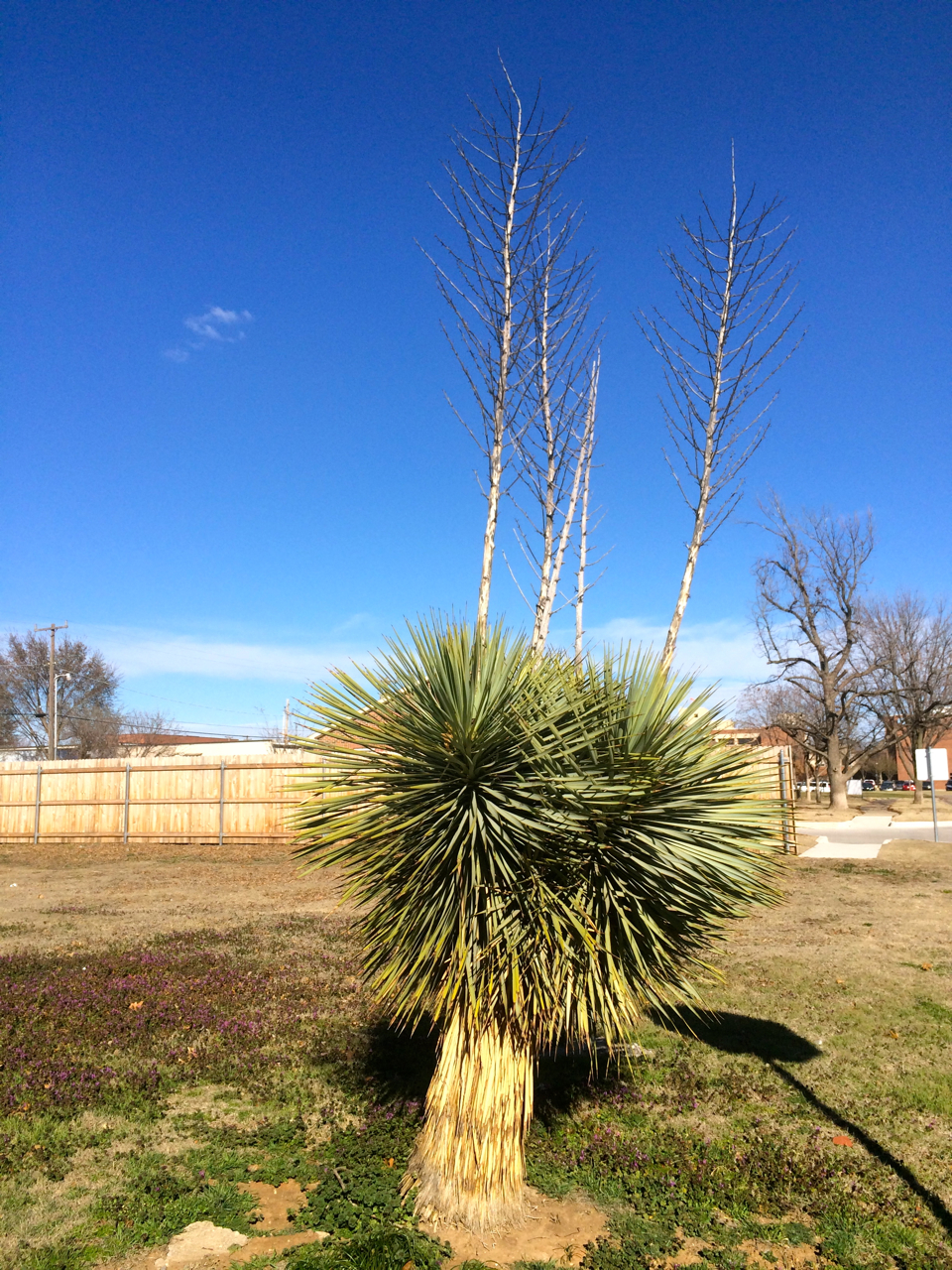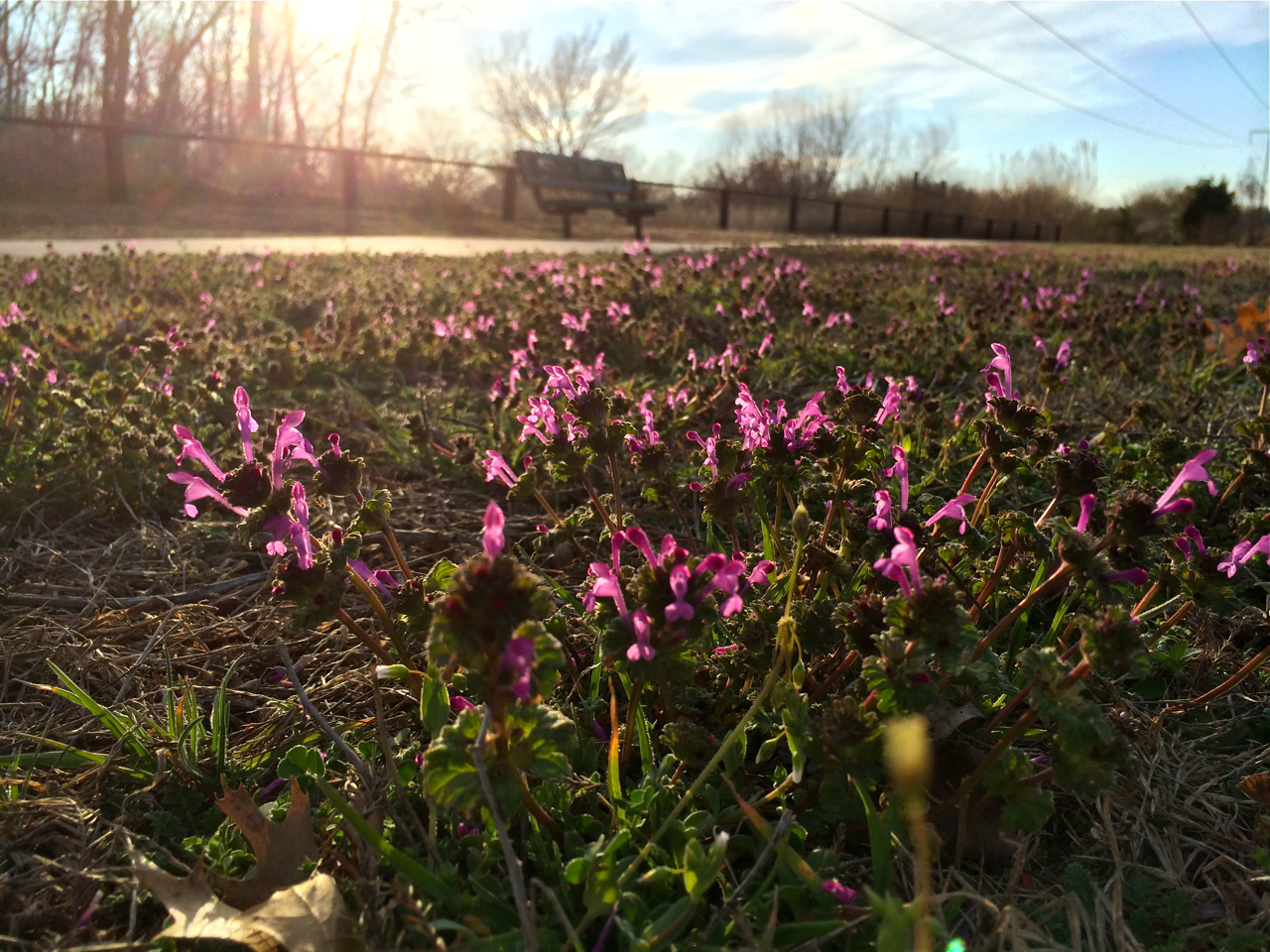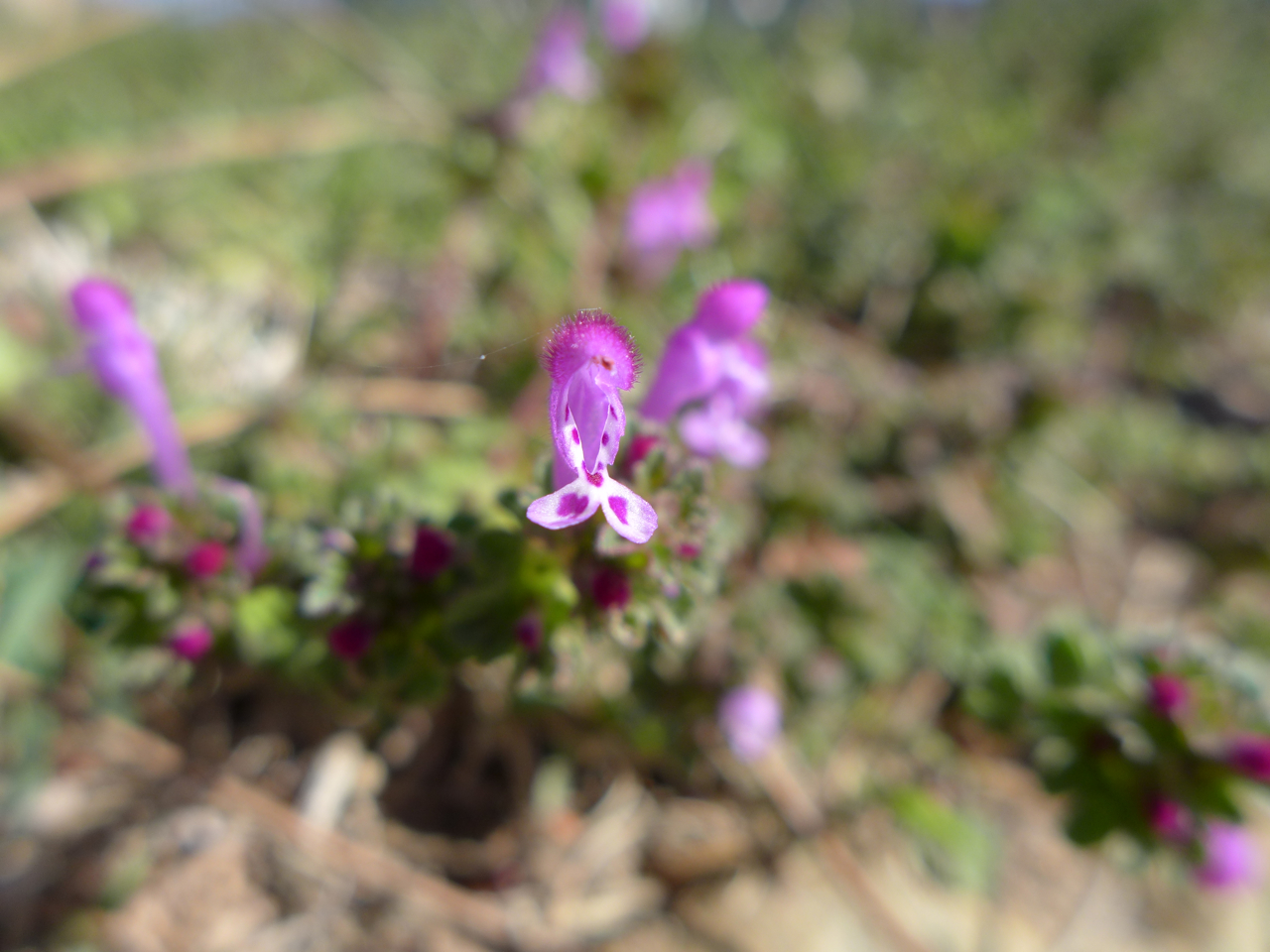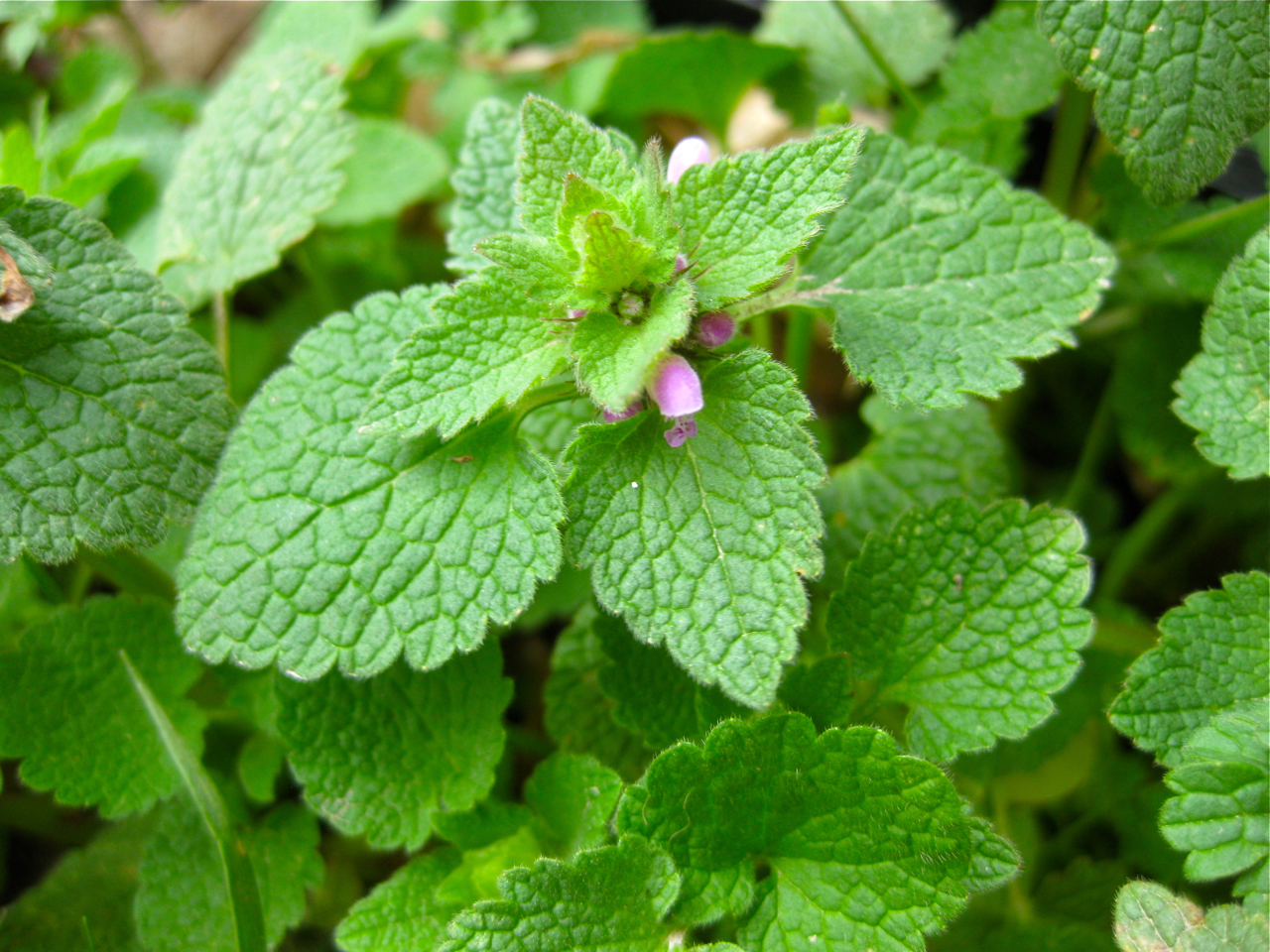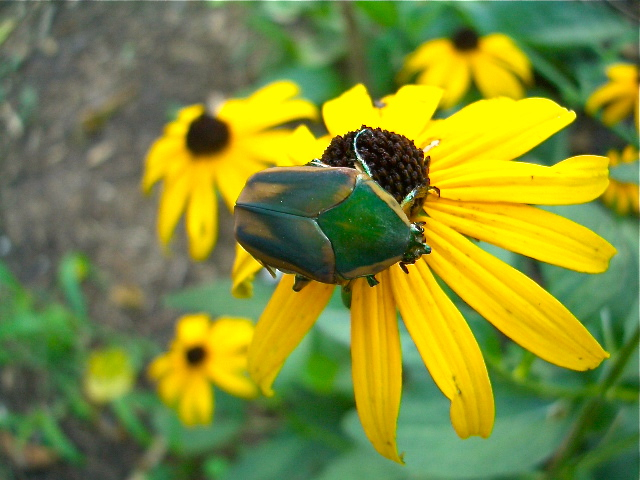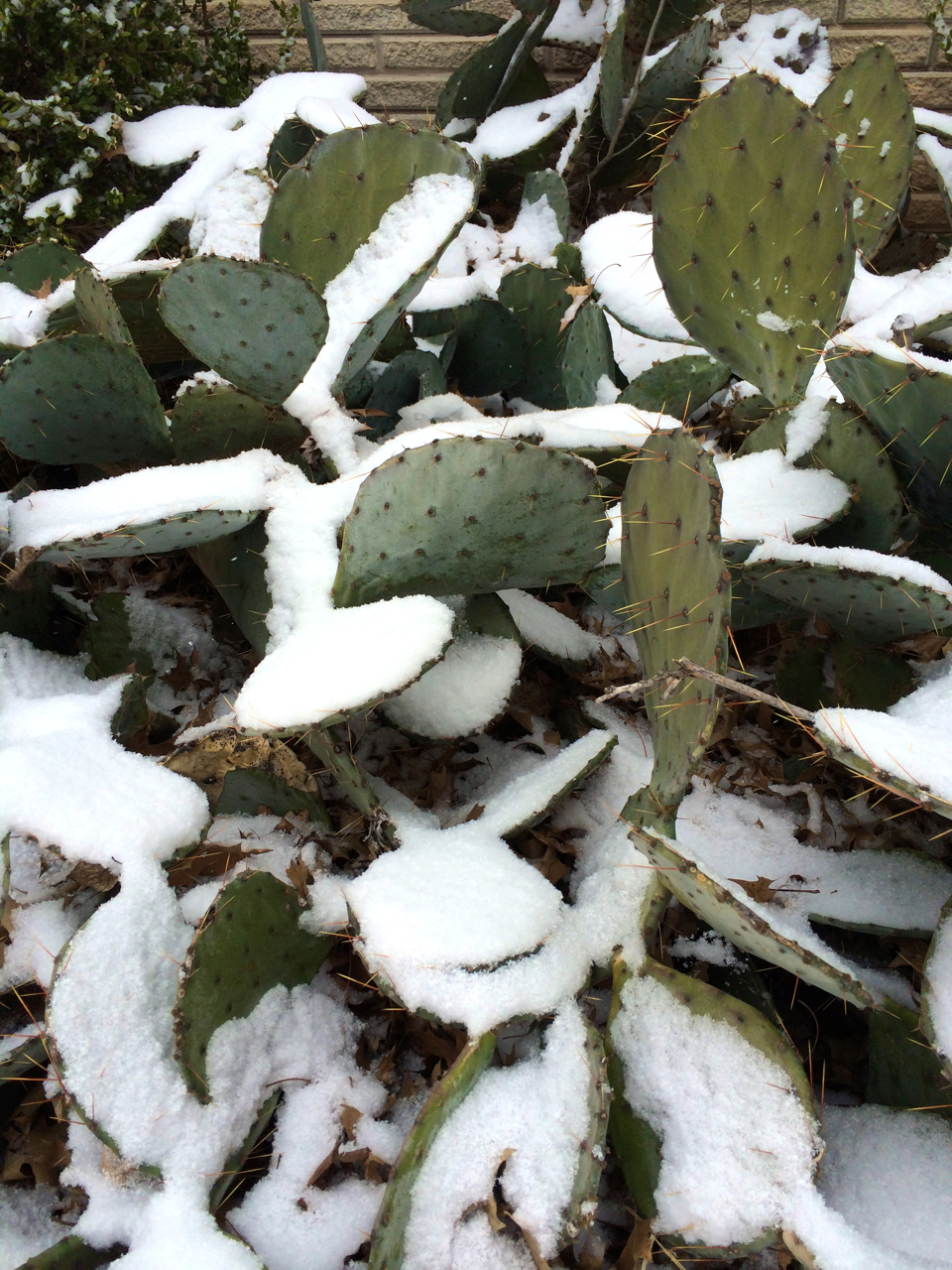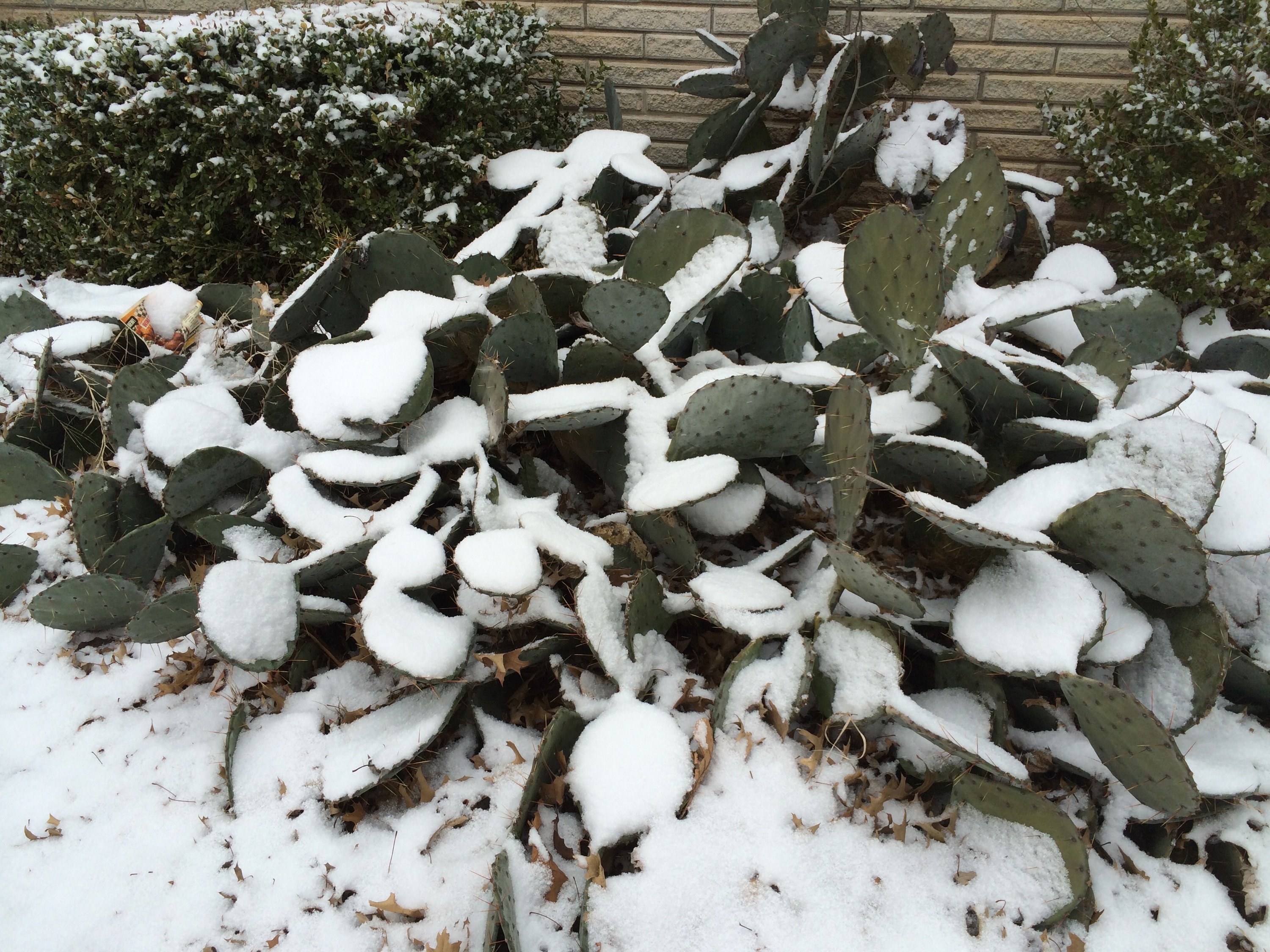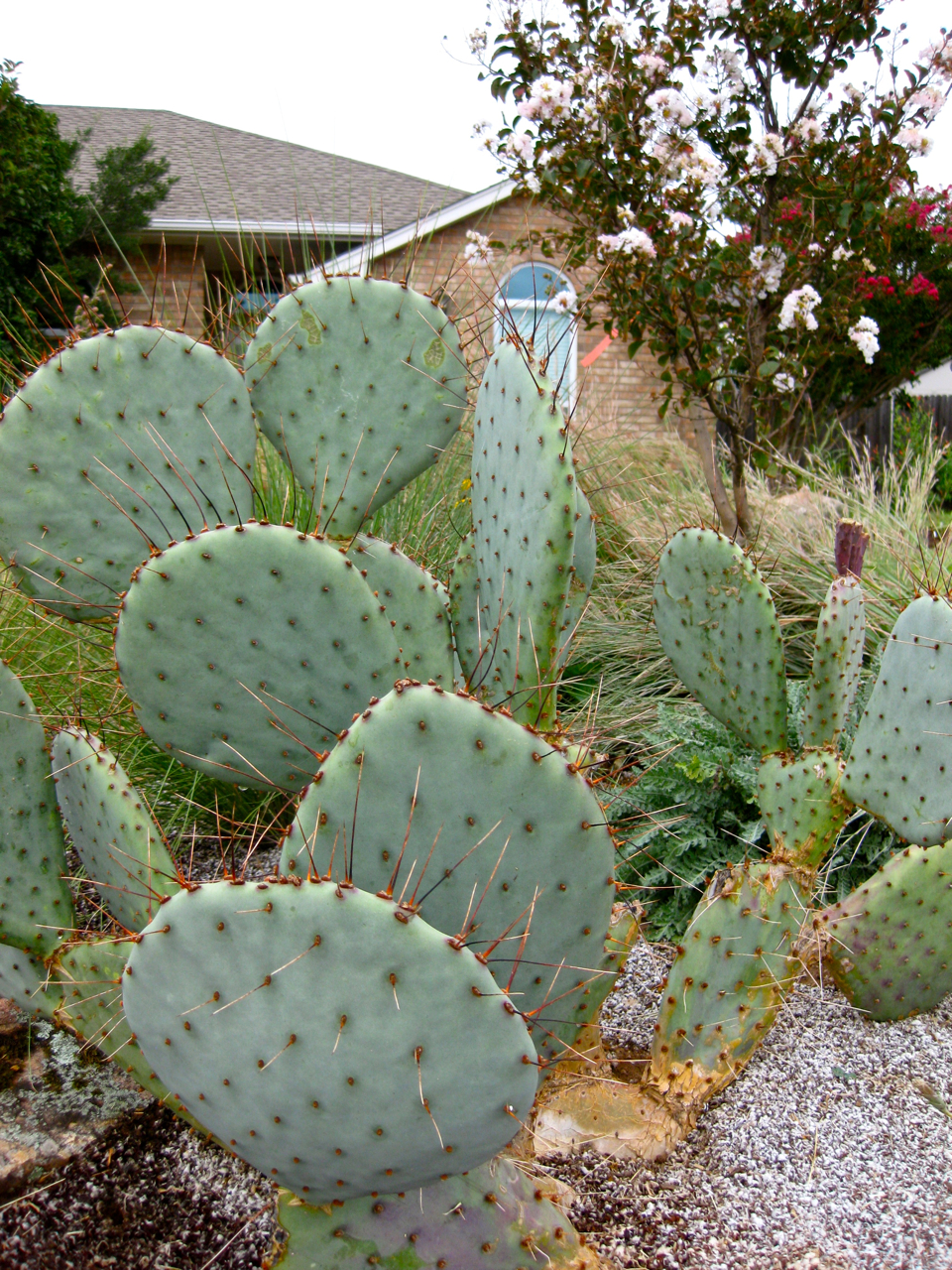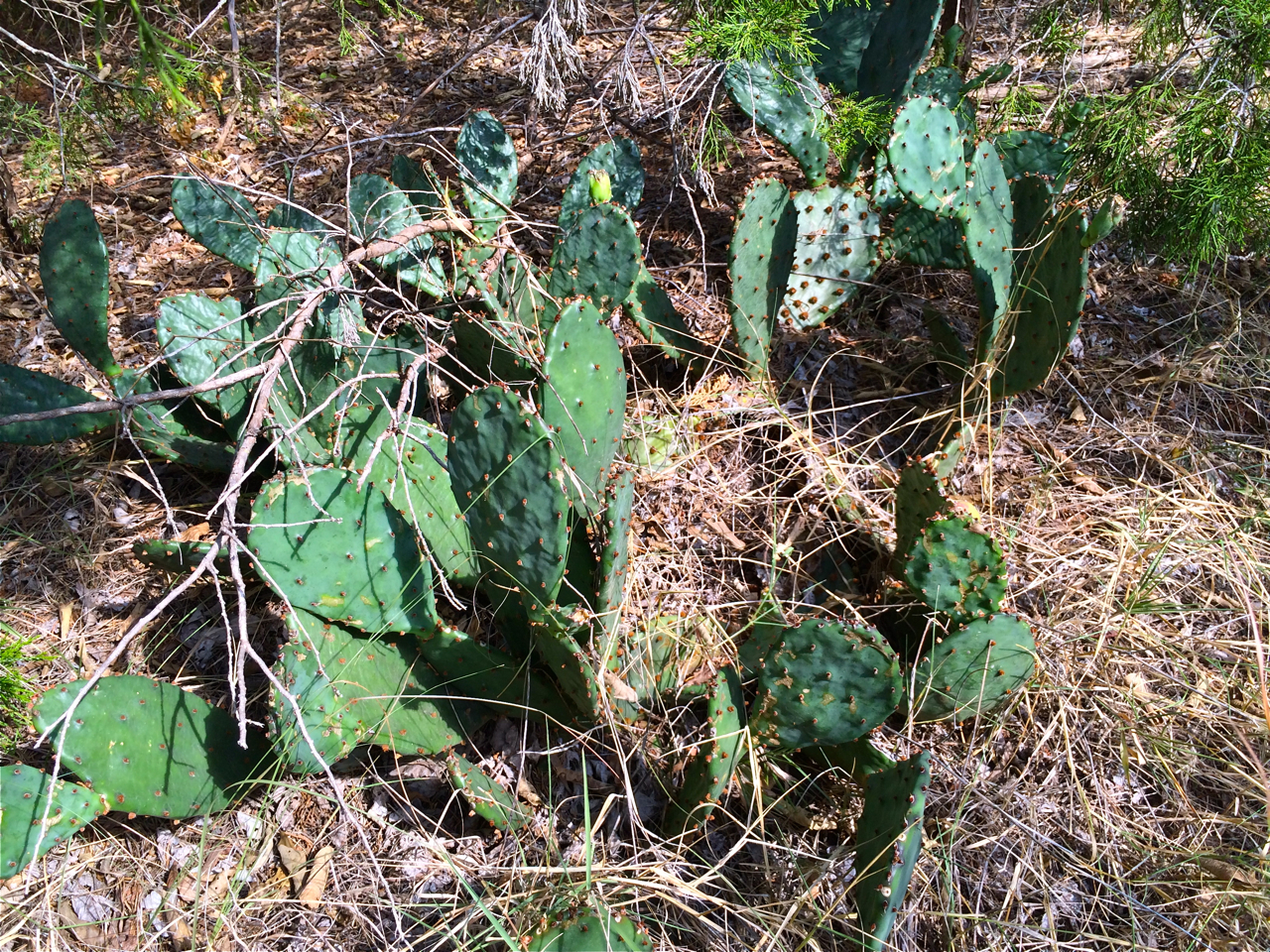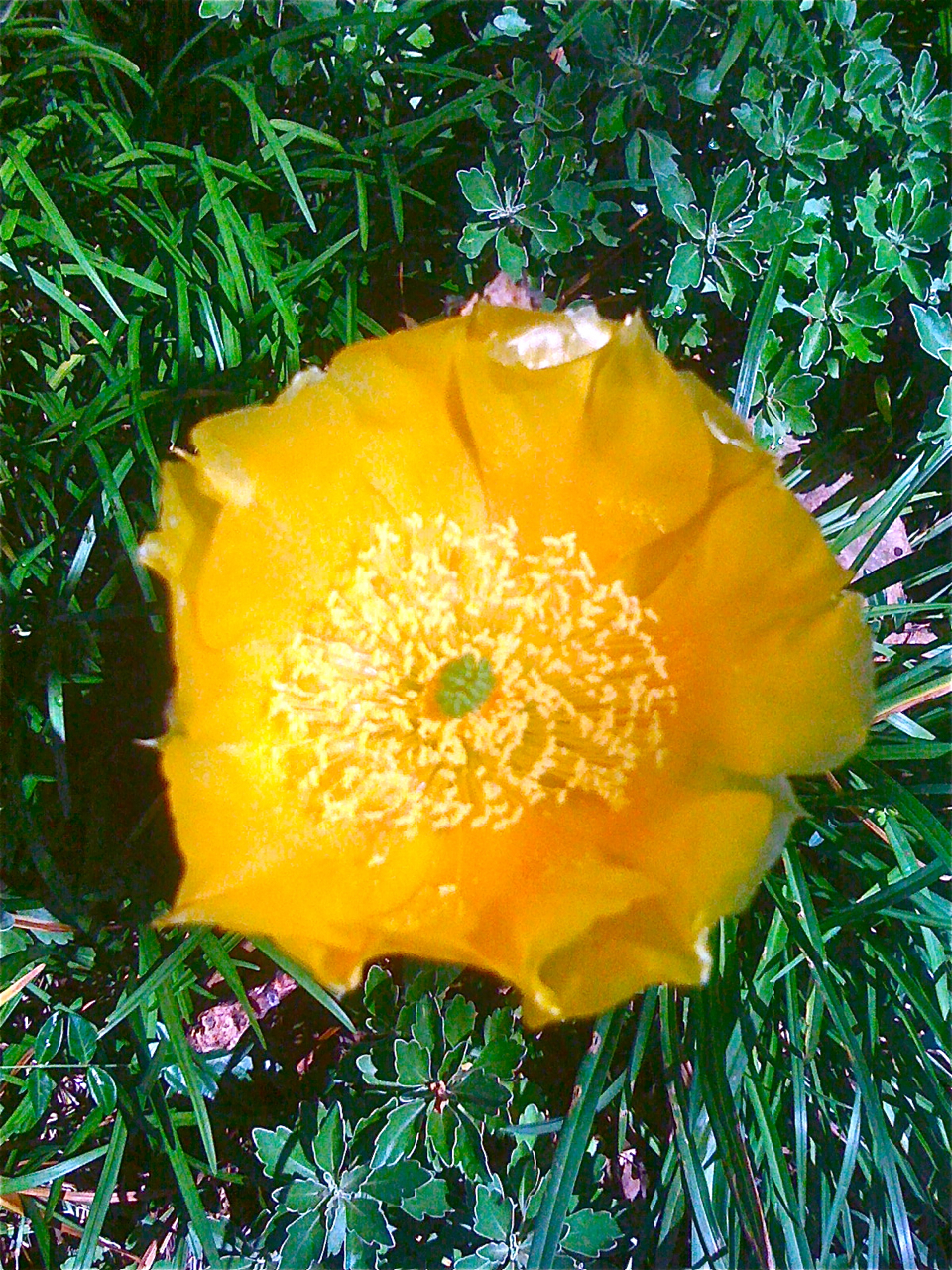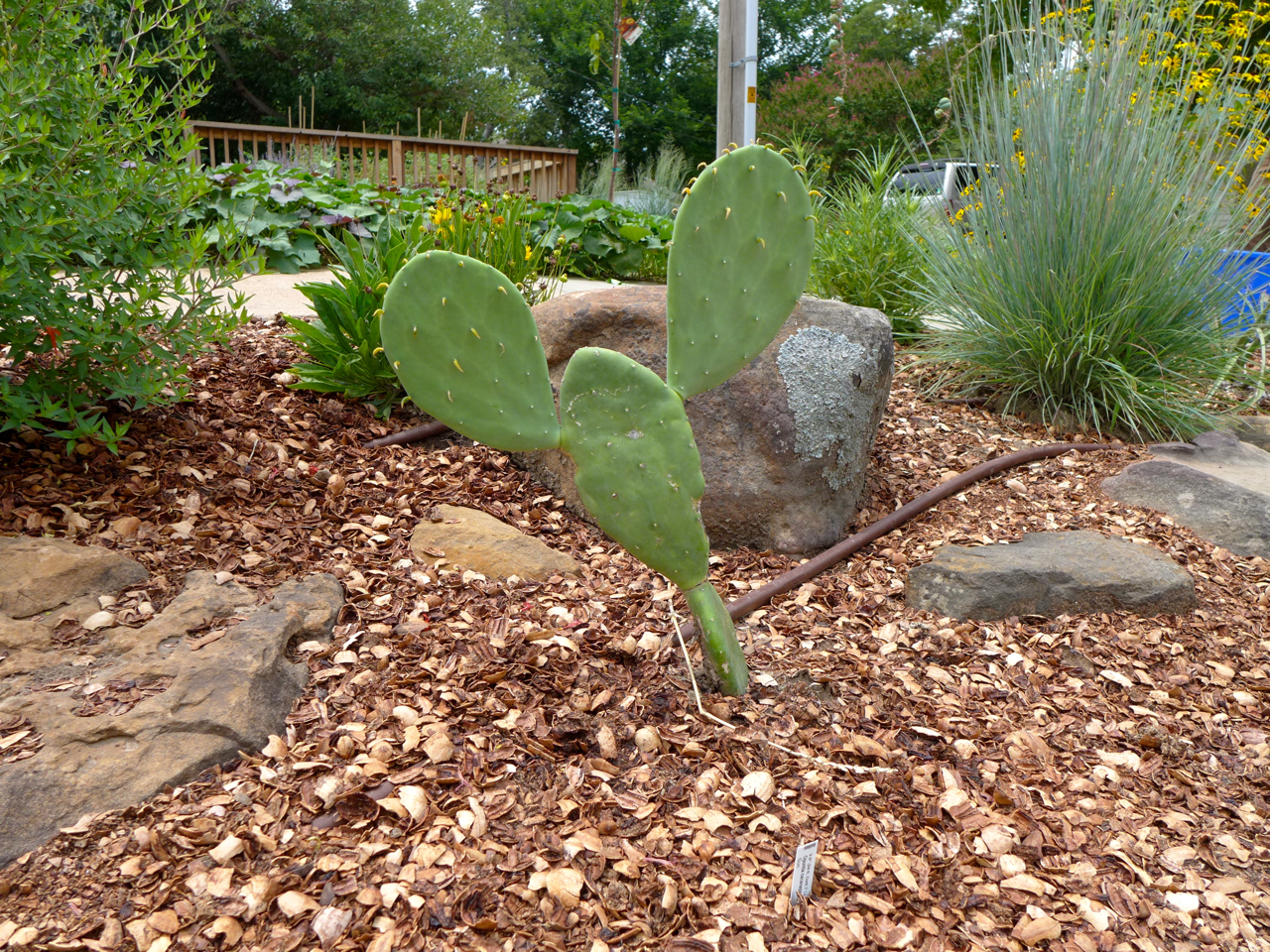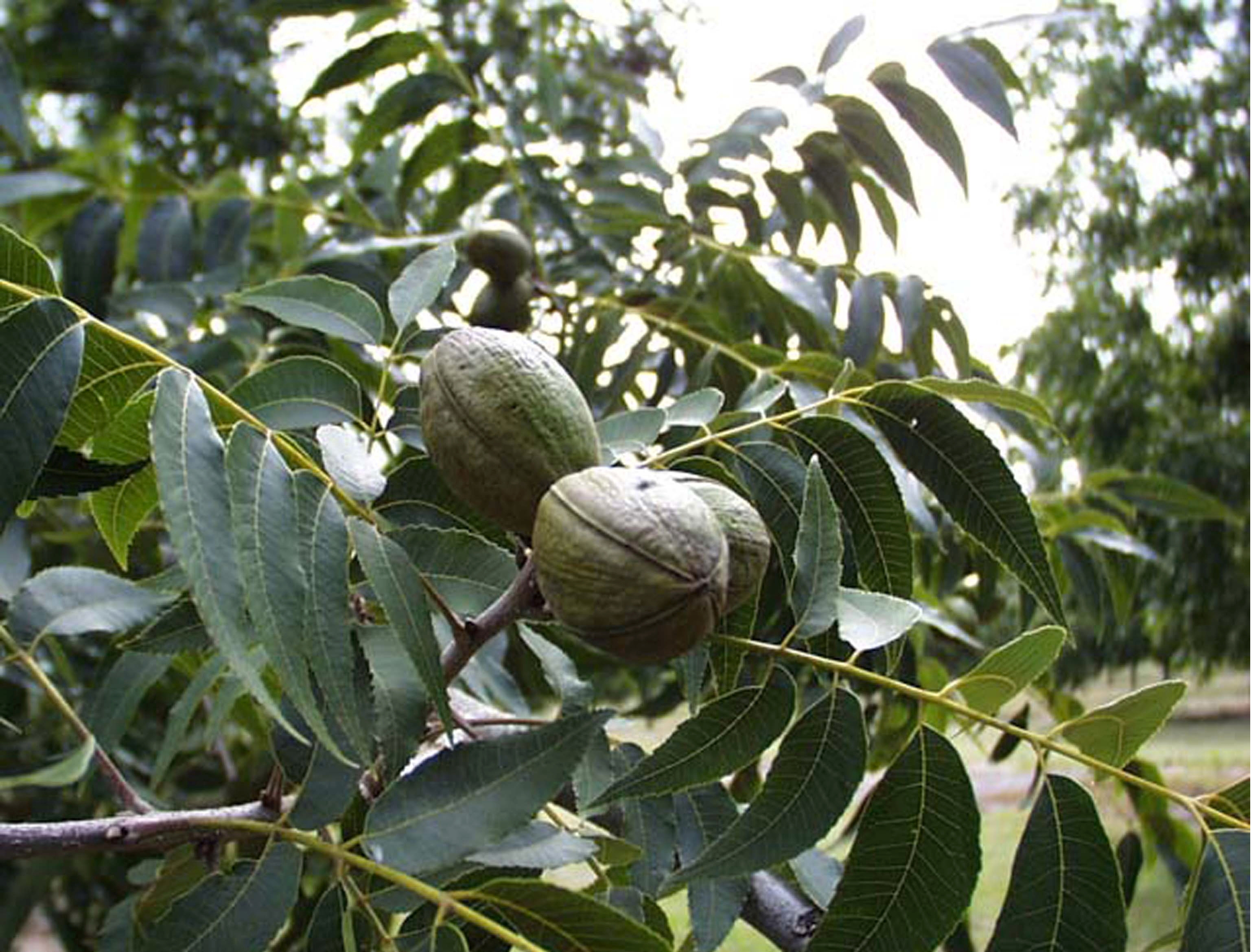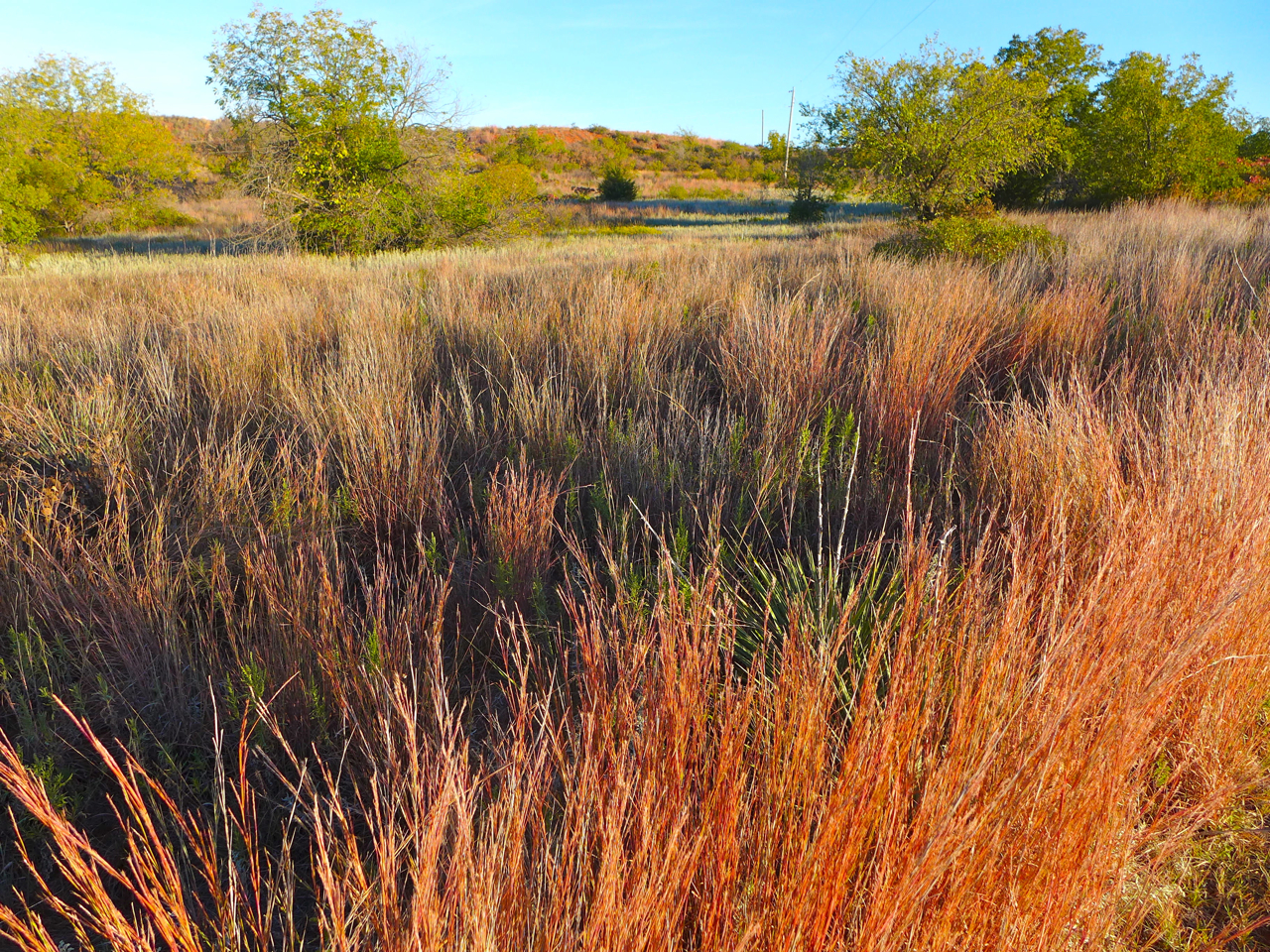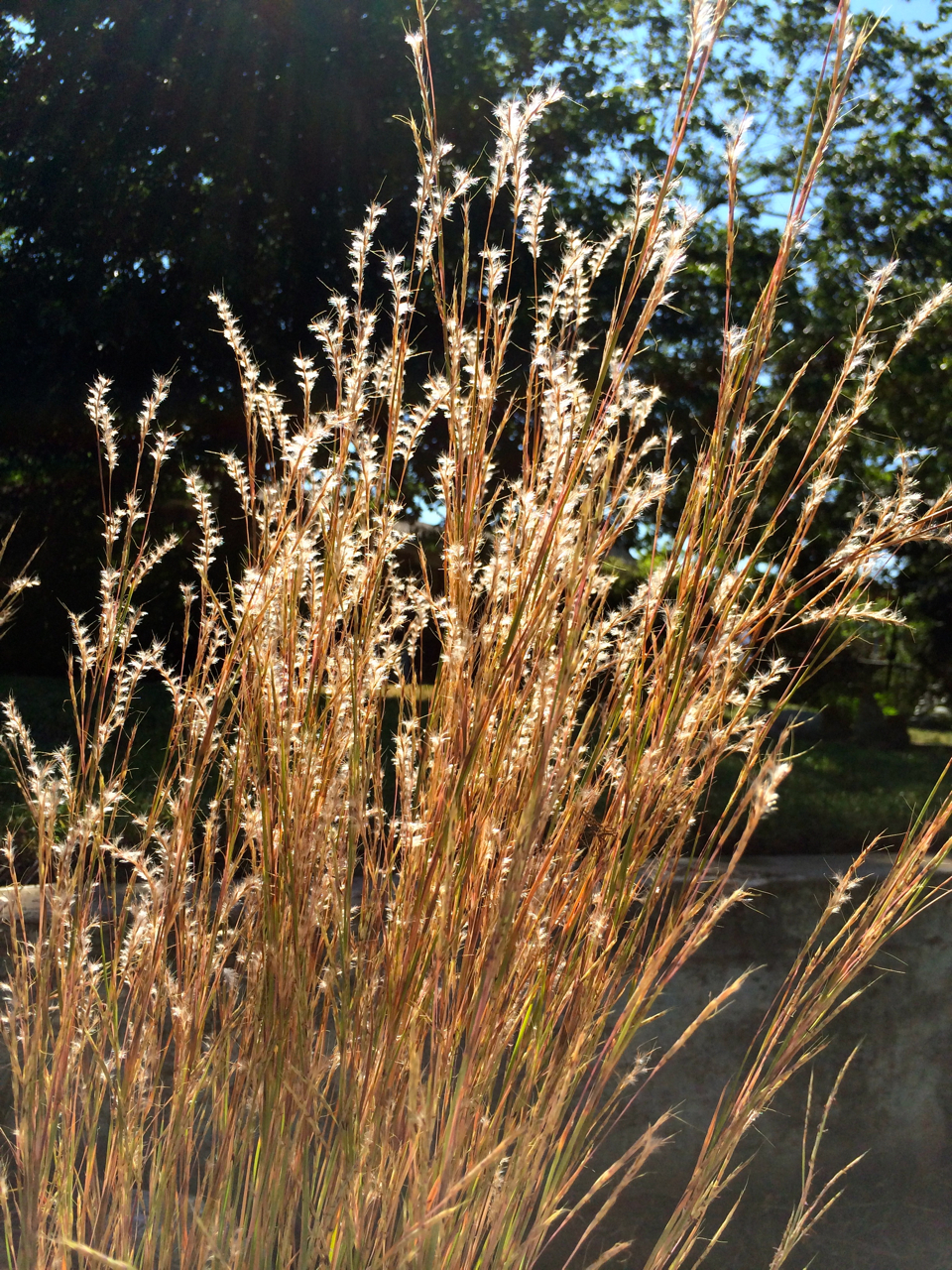Author: Adam
Got Spring Weeds? Why Not Eat Them?
It’s springtime and as the soil and air temperatures begin to warm many opportunist plants get a jump on things and become “weeds” in disturbed places. Though they may seem to be a nuisance upon closer inspection they provide many benefits to wildlife and man. So before you get out your weed eater, garden gloves or, god forbid, your herbicide of choice, consider eating, appreciating and using these weeds. The following is a brief introduction to some of the more common spring weeds and their uses.
Henbit (Lamium amplexicaule)– This ubiquitous flowering spring weed is such a pan global migrant that it’s exact place of origin is not known. It is thought to have originated in the Mediterranean and it has long been naturalized in the U.S. Like many such weeds it thrives mainly in places of human disturbance so it’s not much of a threat to healthy native vegetation. As weeds go, this one provides many benefits, so it is worth considering it’s values. First to consider are the lovely blossoms which can paint a whole field bright magenta in Spring. I have even observed the color from a plane! Upon closer inspection the flower has a beautiful orchid like appearance. These lovely little flowers provide an early nectar and pollen source for bees and pollinators. Secondly the whole plant is edible! It can be eaten raw or cooked and has a somewhat mild flavor similar to many common greens (lettuce and kale come to mind). It can be good in salads, soups, wraps or even green smoothies. It has a ton of vitamins and as an anti-rheumatic herbal solution.
Dead Nettle (Lamium purpureum) – Dead Nettle is a very similar European relative of henbit. They can often be found growing together and they provide many of the same benefits. The best way to differentiate between the two is that Dead Nettle has more triangular shaped leaves and Henbit’s are more heart shaped. Dead Nettle also tends to have dark purple leaf coloration toward the top of the plant. Eat and prepare in the same way you would Henbit
Chickweed (stellaria media) – Another common lawn weed that tastes good and is good for you. It can be eaten raw and it has the texture of corn silk, it makes a great addition to salads, and when cooked it kind of tastes like spinach. Since chickweed is stringy it is often best to chop it up. Chickweed does contain small amounts of saponins so it is best eaten moderately.
Dandelion (Taraxacum officinale) – Another pan global opportunist, Dandelion is a staple of springtime and can be a staple of the everyday diet. Dandelion is another one that can be eaten raw or cooked. They are a little bitter so picking the smaller leaves can help make it a little more palatable. Blanching the leaves will also help reduce bitterness. Dandelion leaves can be wilted or steamed and the flowers are edible too. The flowers have a fairly sweet taste and crunchy texture which goes well in salads. They can be used to make dandelion wine as well. If that was not enough, the roots can be dug up and used as a substitute for coffee. The whole plant also has medicinal benefits, in particular known to detoxify the liver. In Europe, Dandelions are often grown as a garden green and numerous cultivars are available.
These are only a few of the many plants available for foraging so do some research and find out what plants are in the neighborhood. When picking and consuming edible weeds it is important to be very cautious because some plants look like others (do your research carefully!!). As a word of caution it is best to eat wild foods in moderation, especially when beginning. These plants have very concentrated nutrients compared to their cultivated counterparts so it can take a while for your body to adjust to eating them. If any area has been subjected to chemicals of any sort then it is best to avoid eating anything taken from that area. Happy hunting and Bon Appétit!!
Ps. If you’ve eaten your fill of edible weeds and still have too many, give us a call for some garden maintenance.
For more information on foraging Oklahoma edibles of all kinds visit:
Oklahoma Wildcrafting
more general information and good photos for ID can be found here:
Eat The Weeds
Fungi Perfecti
I’ve always liked Paul Stamets.
Aphanostephus skirrhobasis (lazy daisy)
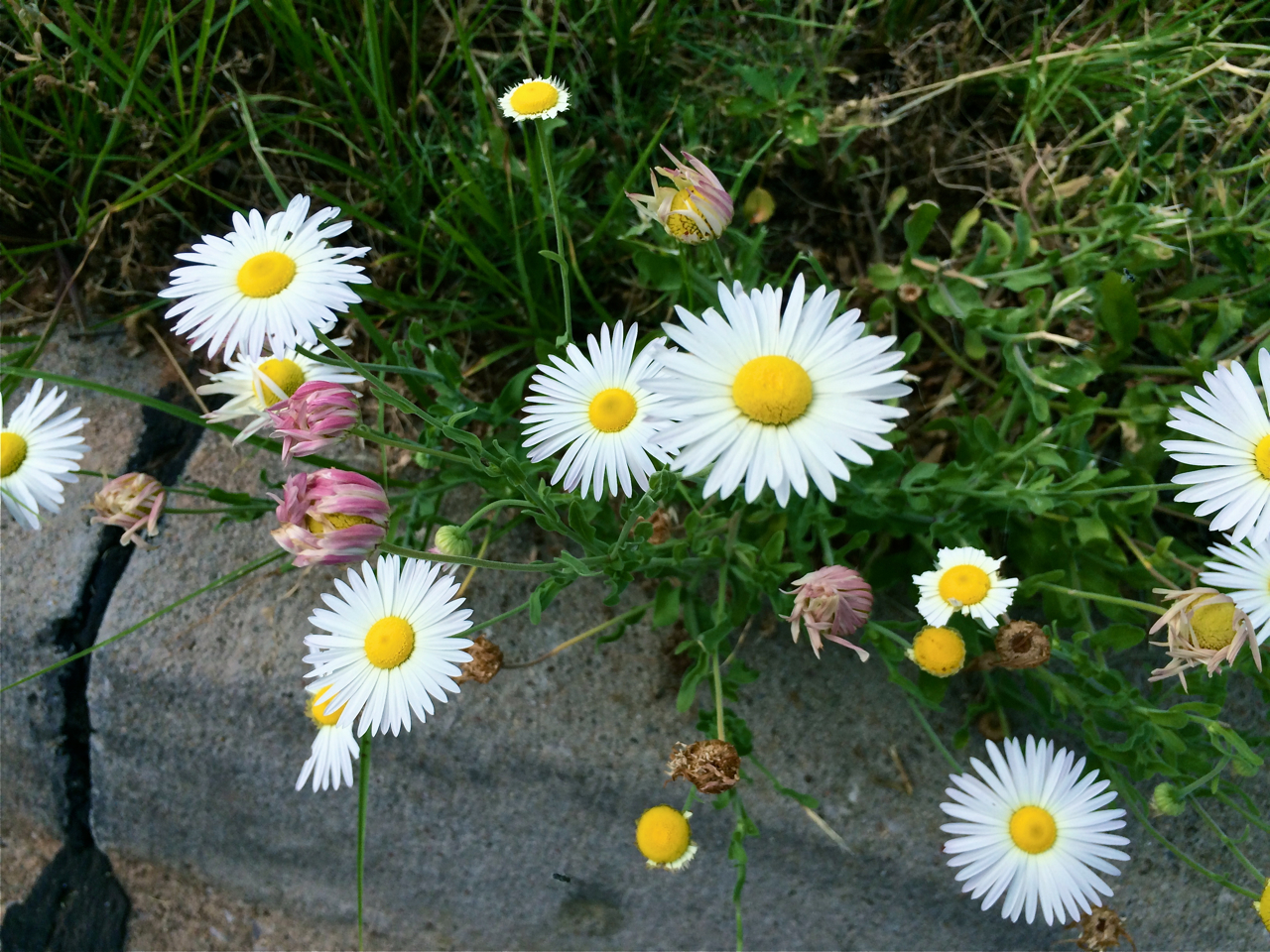
Height: 1-2 feet
Spread: 1-2 feet
Type: Annual
Origin: Grows in many Oklahoma counties and also Arkansas, Missouri, and Texas
Water: dry to medium
Exposure: Full sun
Edible: ?
Medicinal: ?
Companions: Often seen with short grass prairie plants like : Liatris spicata (dotted gayfeather), Bouteloua gracilis (blue grama), and Gaillardia pulchella (indian blanket)
Notes: Aphanostephus skirrhobasis is a long blooming annual often found in sandy hot prairies and disturbed sites. It beautiful white and gold blooms are much like small Ox eye or Shasta daisies but they have a lovely pink to rose shade on the underside of the ray florets. A field of these in bloom is like a sea of stars, it’s nothing short of magical. It’s common name ‘Lazy Daisy’ comes from it’s predilection to wait until midday to open it’s flowers (not an early riser). It is a particularly hardy flower and can thrive in sandy soils with little water. It is known to grow in the grasslands, meadows, pastures, savannahs, and even on the edges of woodlands. In the garden it will grow into a nice low colorful mound of white blossoms. Due to it’s low profile it works well in the front of beds or dotted amongst low growing grasses. Native annuals are often overlooked as alternative to traditional bedding plants but it’s somewhat baffling why this one isn’t grown and appreciated more. Like many annuals, Lazy Daisy is good at self seeding so it can stick around in your beds for many years. If you are looking to attract wildlife then the lazy daisy is also helpful because they have a large amount of crude protein which deer in particular love to browse year round. Thanks and Good Luck!
Rudbeckia fulgida (black eyed susan)
Height: 2-3 feet
Spread: 2-2 ½+ feet
Type: Perennial
Origin: Native to central and eastern U.S., including some southern and eastern Oklahoma counties
Exposure: Full sun to part shade
Water: Medium
Edible: no
Medicinal: no
Companions: Sporobolus heterolepis (prairie dropseed), Lobelia cardinalis (cardinal flower), Echinacdea purpurea (purple coneflower)
Notes: Rudbeckia fulgida is the common perennial “black eyed susan” sometimes referred to as “orange coneflower”. It is native to the eastern United States and grows in moist to moderately dry soils in open woods, glades and thickets. It’s dependable profuse display of yellow coneflower blooms make it a somewhat ubiquitous but still very worthy member of any bed. It always performs well in our hot summers and it’s very adaptable to different soil and light situations. The bloom period generally starts in June but deadheading can encourage one or more successive blooms. R. fulgida does spread by rhizomes and will gradually spread but it is easy to divide and control. The divided clumps transplant well, and the blooms make good cut flowers. Plant them en masse as a border or in a cottage, meadow, or a native plant garden setting. Echinacea purpurea is a very nice companion coneflower for R. fulgida. Pollinators, butterflies and other wildlife like R. fulgida.
There are a number of varieties and cultivars of R. fulgida. The most common cultivar is ‘Goldsturm’ which is a very reliable one to go with but there are many others and natural varieties to consider too. The differences between the varieties is fairly subtle and any of the varieties will work well in your landscape and gardens.
Cold Hardy Opuntia!
Opuntia (prickly pear cactus)
Opuntia (prickly pear) is a large and intriguing but often confusing genus of cactus. There are a number of Opuntias species native to Oklahoma and in general many Opuntias seem to do well here. Their unique form adds a striking contrast to the more common herbaceous and shrubby plantings. Like most of our favorite plants prickly pears are multi use plants that provide beautiful flowers, delicious fruit and attractive appearance. They are very drought tolerant and very low maintenance. We have been collecting various specimens in the area and have a number to choose from although it’s often difficult to discern which species or hybrids we have. Contact us for more information on our current Opuntia availability. Here’s a list of some of the species we’ve had good luck growing.
Opuntia Humifusa (Eastern Prickly Pear Cactus)
Height: ¾ feet -2 feet
Spread: 3-4 feet
Type: Perennial (Cactus)
Origin: Native to Eastern United States from Massachusetts to Minnesota and south to Oklahoma and Florida
Exposure: Sun to partial shade
Water: Low (heat tolerant)
Edible: ripe fruit edible raw or in jellies, the pads are also edible (watch out for bristles!); however, be careful because the barbed hairs or ‘glochids’ in clusters on the stems can cause severe irritation.
Medicinal: peeled pads are used to poultice wounds, applied the juice to warts, and drank pad tea for lung ailments
Companions : Schizachyrium scoparium (little bluestem), Rudbeckia fulgida (black eyed susan), Rosmarinus officinalis (rosemary), Baptisia (false indigo), Agastache (anise hyssop)
Notes: The Eastern Prickly Pear is native to much of Oklahoma and is a low growing smallish Opuntia. It produces brilliant (usually) yellow flowers from May through July. Not specifically a desert plant but instead thrives in places where there is water run-off part of the year and hot and dry the rest. Because of this behavior it is often found in rocky outcrops and on bluffs in sandy soil. It’s small size and rugged appearance, and adaptability make it a good choice for many landscaping situations.
Opuntia Macrorhiza (Common Prickly Pear)
Height: ½ foot -1 ½ feet
Spread: ½ foot – 3 feet
Type: Perennial (Cactus)
Origin: From Utah to Kentucky and south to Mexico
Exposure: Sun
Water: Low (heat tolerant)
Edible: ripe fruit edible raw or in jellies or candies, the pads are also edible (watch out for bristles!) raw or cooked
Medicinal: The sap is used for medicinal applications, the prickly pear can also be used as anti-inflammatory medicine or as a laxative. Even more recently it has been used to aid in exercise recovery and to help get rid of hangovers.
Companions: Schyzicarium scoparium (little bluestem), Rudbeckia fulgida (black eyed susan), Rosmarinus officinalis (rosemary), Baptisia (false indigo)
Notes: A more arid/western species but closely related to O. humifusa with whom it’s range overlaps in our state. The Common Prickly Pear produces bright usually yellow flowers but white, red, orange and pink flowers are also known to exist. It grows easily in dry sandy soils in full sun. Use much like O. humifusa but less tolerant of wet soils.
Opuntia Cacanapa “Ellisiana”
Height: 4 feet- 6 feet
Spread: 3 feet – 6 feet
Type: Perennial (Cactus)
Origin: A spineless selection of Opuntia cacanapa which grows in south Texas and into Mexico. Often mistakenly considered one of Luther Burbank’s famed thornless varieties.
Exposure: Sun
Water: Low (heat tolerant)
Edible: The pads are edible and primarily spineless which makes for easier and safer preparation
Medicinal: much like other prickly pears
Companions: Schyzicarium scoparium (little bluestem), Rudbeckia fulgida (black eyed susan), Rosmarinus officinalis (rosemary), Baptisia (false indigo)
Notes: Ellisiana is a relatively big and largely thornless prickly pear that is known to be hardy to at least 7a (most of Oklahoma). The pads have a lovely grayish tinge and the flowers are a bright yellow. Being largely spineless and free of glochids (barbs) Ellisiana may be our best variety for use as edible pads (nopales). Thanks for reading and good luck!
Carya illinoinensis (hardy pecan tree)
 Height: 75 feet -100 feet
Height: 75 feet -100 feet
Spread: 40 feet -70 feet
Type: Large shade tree
Origin: Iowa and Indiana south to Texas and Mexico. Grows in a majority of Oklahoma counties
Exposure: Full sun
Water: Medium to moist
Edible: Pecans are one of the most reliable and abundant nut producing trees in our state. The nuts are full of healthy fats, a good amount of protein, and many vitamins and minterals. They are very high in calories which make them a good survival and self sufficiency food. Pecan pies are hard to beat!
Medicinal: the bark and the leaves are astringent, a decoction of the bark has been used to treat tuberculosis, and the pulverized leaves can be used to treat ringworm
Companions: Chasmanthium latifolium (river oats), Carex albicans (white tinged sedge), Aquillegia Canadensis (colombine), Heuchera, Cercis canadensis (redbud), Amelanchier (serviceberry)
Notes: The pecan tree is the largest of the hickories and is typically found in lowlands where there are rich, moist soils. The wood is used for furniture, flooring, veneer, and charcoal for smokng meats. It is a difficult tree to transplant and is slow growing. Not ideal natural borders but instead great for shade tree and for the delicious nuts it produces. The oddly pinnate leaves are somewhat spread out and therefore provide a nice dappled shade that allows enough light for woodland garden plants. Fall color in good years is a lovely gold or bright yellow. Pecan limbs tend to be susceptible to breakage during storms but overall, given proper sighting, Pecans are a long lived shade tree worthy of any large yard or property.
Schizachyrium scoparium (little bluestem)
Type: Perennial Bunchgrass
Height: 1 to 4 ft. (average height 3 ft.)
Spread: 1-2 ft.
Origin: Much of the U.S. including most Oklahoma counties
Exposure: Full Sun to Part Sun
Water: Medium to dry. Can tolerate some wetness
Edible: n/a
Medicinal: Used as a switch in sweat lodge ceremonies
Companions: Echinacea (pallida, angustifolia, purpurea), Agastache, Baptisia, Pinus mugo, and Perovskia, Yucca glauca
Notes: Few plants are as integral a part of the aesthetics of the Great Plains (and Oklahoma) as Little Bluestem. This grass is an essential component of prairie ecosystems and should be an essential ornamental grass in every landscape. Not many ornamental grasses, (native or otherwise) have the characteristics of beautiful year round color/form and also such a graceful appearance that doesn’t overwhelm spaces. It’s unique attractiveness embodies a wonderful balance between tough ruggedness and delicate elegance.
Little Bluestem grows in dense clusters, and is a warm season species that thrives on the sun and likes well-drained soil. It is very heat and drought tolerant and does well in a variety of situations. It is fairly easy to grow from seed but seedlings are often slow to get established. There is a great range of diversity in this plant but the colors generally range from shades of red, purple, greens, blue, copper and gold (often all of these colors are present in one plant throughout the seasons.) The color changes throughout the season give year round interest.
We use little bluestem in mass or scattered throughout sunny perennial beds. It’s makes an excellent background for showy perennials and ground covers. It’s color and form provide a wonderful sense of movement and dynamics to a landscape, and it plays nicely with perennials, shrubs and other grasses.
Many Little Bluestem cultivars and selections have been released both for forage value and as “improved” landscaping varieties. Some of our favorites include ‘The Blues’, ‘Praire Blues’ and ‘Blaze’. ‘Cimmaron’ is a native Oklahoma selection from the 70’s that is harder to find but a good choice for our region. Although we generally like to avoid patented plants there are a few new patented Little Bluestems that offer very unique color and growth habits including ‘Smoke Signal’, ‘Twilight Zone’ and ‘Prairie Munchkin’. If you venture out into most rural areas of Oklahoma chances are that you will see a wide variety of local specimens that have interesting and unique traits that are likely to adapt well to your landscape. These local ecotypes could be your ideal “variety”.
Little Bluestem benefits a wide diversity of wildlife both as nesting and roosting habitat as well for food in the form of it seed and as forage. It is also the host plant for a number of butterflies. As Oklahoma’s native grasses and plants become more and more rare in many of our most populated areas it is important to bring this beautiful grass back into our landscapes. With it’s combination of beauty, hardiness, versatility and ease of growth there is no reason why any Oklahoma garden should be without it.
Amelanchier x grandiflora ‘Autumn Brilliance’
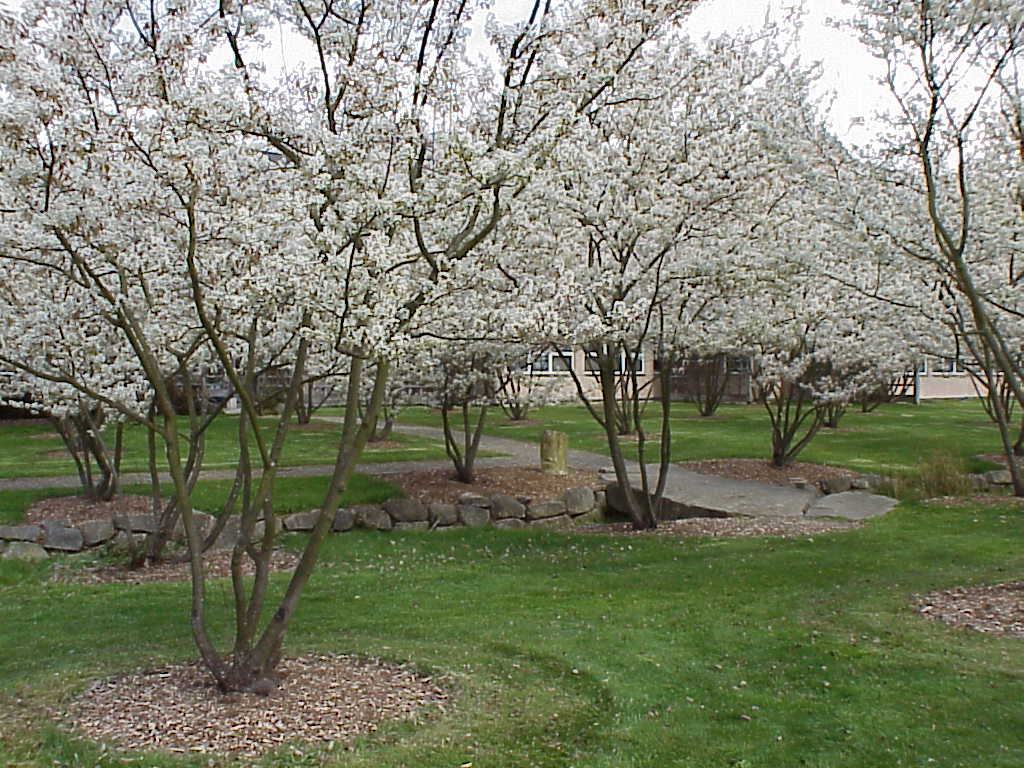 Height: 15-25 feet
Height: 15-25 feet
Spread: 15-25 feet
Type: tree
Origin: Hybrid of two native Amelanchier species: Laevis and Canadensis
Exposure: Full sun to part shade
Water: medium
Edible: serviceberries are very similar to blueberries in flavor and appearance. They can be used in pies, jams, and jellies or simply eaten raw. This is truly one of the sweetest and tastiest native fruits.
Medicinal: Native Americans used serviceberry for a variety of different purposes from toothaches to cold remedies and more.
Companions: Quercas (oaks), Celtis occidentalis (hackberry), Chasmanthium latifolium (river oats), Heuchera (coral bells)
Notes: Being a hybrid this particular variety of serviceberry has been cultivated for the best qualities of fruit production, blooms and fall color. The blooms start in April giving way to the fruit in June (they are also called Juneberries.) The leaves on the apple serviceberry are fantastic. In early spring they emerge with bronze tints which change to dark green from summer until fall when they turn a stunning red or orange-red. Serviceberries are under story trees best grown under the dappled shade of a larger tree but given enough moisture and fertile soil they can tolerate some sun. Best to at least provide some afternoon shade and make sure to give adequate water. Once established they can be somewhat drought tolerant but generally like moist soils. If left un-pruned a suckering bushy colony may form but keeping it trimmed into a single or multi-trunked tree form doesn’t require much work. Just prune off suckers as they appear (mainly in spring). This small tree really has all of the qualities which make for a standout edible landscaping plant. Even if you don’t eat the berries the birds and other wildlife really love them too. “Autumn Brilliance” is really a no brainer for most landscapes. Many of the other Amelanchier native species are also good candidates for landscape use.


